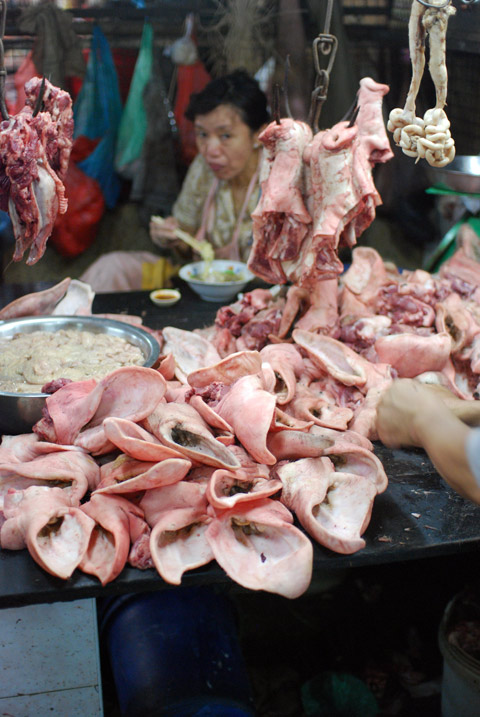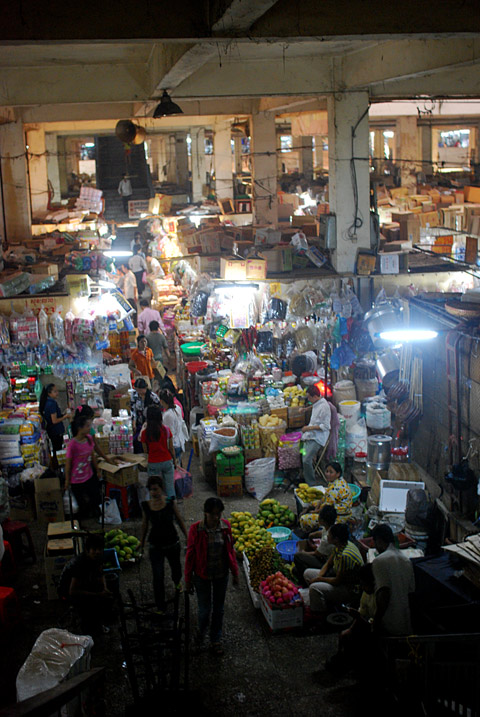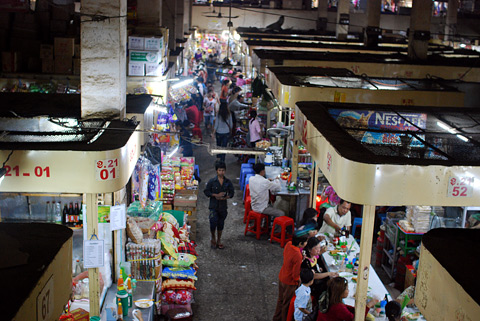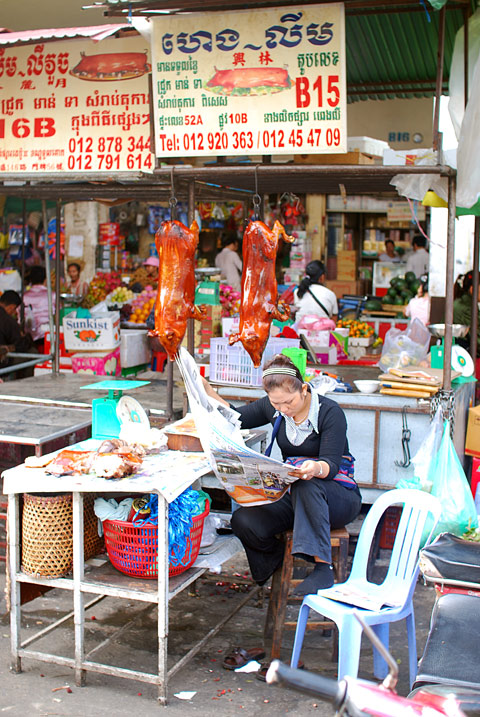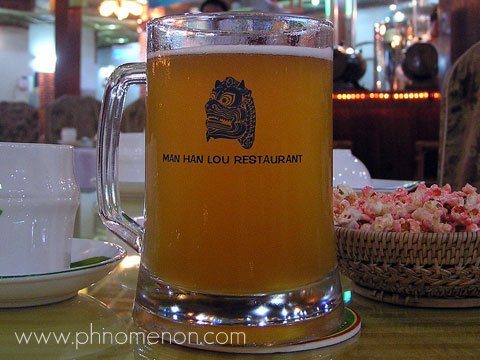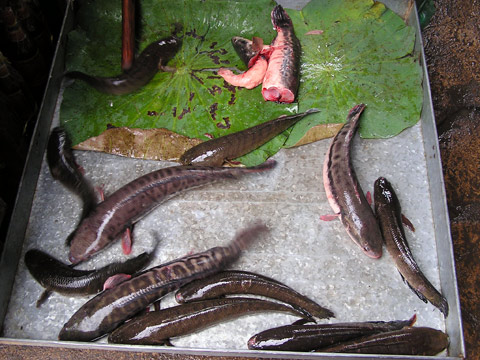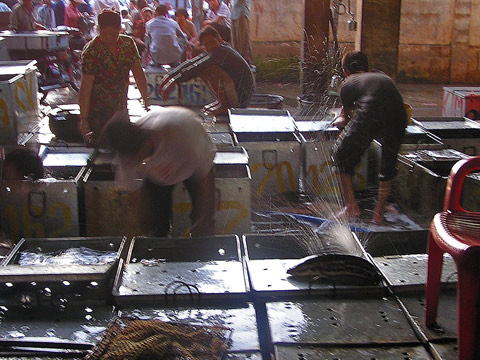Much like this blog, Phnom Penh dive bar Alley Cat recently celebrated their fourth anniversary. That’s 70 years old in Cambodian bar years, managing to outlive much healthier bars, subsisting on a diet of Mexican and gigantic hamburgers.
Category: Phnom Penh
Live from Cambodia’s Capital
Goodbye Russian Market?
Via DAS. Market vendors at the Russian Market (Psar Toul Tom Poung) have just received the eviction call. Diana from Cambodian recycled bag vendor, Bloom writes:
I got a call from the Bloom manager in Phnom Penh this morning. Vendors at the Russian Market, where we have a stall, were told the government was going to shut down the market.
We have heard similar rumours for the last year or more, that the market would be closed for either (a) renovations or (b) relocation. In fact, the landlady at our former shop sold the shop, which was on the outside of the market, because she was told only shops inside the market would qualify for compensation. Shops on the outside are not considered part of the market, it seems.
There was a sign up at the Russian Market a few years ago with an image of a market eviscerated of any local character, suggesting that the wave of gentrification was about to swamp the market, but at that point in time it looked as likely as motodops being replaced by flying cars.
Deep fried balls

It seems that I’ve arrived at Psar Thmei (Central Market) just in time to see it renovated. I imagine that the front, which is currently cleared of vendors, is being prepared to build either a twenty story apartment building or an illuminated fountain. These seem to be the two contributions of modern Cambodian culture to local architecture.
The good news is that the food at Central Market remains unchanged and untouched by development. The above balls fit into the grand genre of Cambodian sweets that consists of of bean paste coated in rice flour dough. The sesame coated balls hit the sweet/savoury bull’s eye; the sugar-crusted versions are as bad an idea as modern Cambodian market renovation. They are both crusty but retain rice flour chewiness.
Price: 4000 riel (US$1) per styrofoam clamshell
Can you survive on $3 a day in Phnom Penh?
I still get the occasional question about the cost of food and eating in Cambodia : but being asked whether one could get by on $3 a day was a new one. It is not an endeavour that I would be at all interested in personally pursuing.
My answer:
Yes, but it would be tough going and repetitive. For a tourist, it would be hardcore. Most Cambodians get by on a $1 a day but in practice, it is an extremely grim way to live; mostly involving cooking your own watery vegetable soup, a little fish paste and rice; and doing so for entire families rather than cooking alone.
It’d be much, much easier if you were cooking for yourself and buying produce from the local markets. While I was living in Phnom Penh, my weekly vegetable bill would come to less than $5 : but this wouldn’t include meat or rice; or the four or five meals out of the house a week. $21 a week would buy a good deal of rice and prahok.
To do it otherwise, you’d have to be eating at the very local joints especially market vendors at Orussei, Olympic Market or other outlying markets where you can generally pick up a decent bowl of noodles or something with rice for around a $1. You’d end up having to have one very light meal a day. My plan would be (if you’re eating outside the home):
Breakfast : Pork and rice; or a hefty bowl of khtieu for around 4000 riel. Coffee.
Lunch : Buy a baguette or two (a few hundred riel), whichever fruit is in season (another few hundred riel), and some pate or cheese to fill the bread. Interchange with ramen whenever you get bored.
Dinner : Pick up a preprepared curry/soup and rice from around Psar Kandal or Psar Chas. Alternate with a small fried fish occasionally.
My big tip (if you’re going to stay in one place/not move around too much) would be to buy a Rabbit-brand water filter (list of retailers(PDF)). You pour in tap water and out comes drinkable, bacteria and virus-free water. It’ll save you a hell of a lot on bottled water.
Life is sweet

Nhoam svay trey chhaoe (Green mango salad with smoked fish)
I spent a whole lot of time in Phnom Penh reliving my old life. I had plans to cover a few new restaurants but the holiday temptation to slide back into the old ways was too powerful.
Part of that life is Sweet Cafe. Sweet is the most dependable Khmer restaurant in town. Of all the Cambodian restaurants in Phnom Penh, it was here that I dined with most frequency. Order the most traditionally Khmer-looking foods on the menu and you’ll never walk away disappointed. Order something not from the pantheon of Cambodian foods, vegetarian for instance, and chances are you’ll be served up a loosely inedible dish in a glutinous sauce. This is a restaurant designed for middle class Cambodia and not for the unpredictable caprices of Westerners who occasionally drop in.

Trokun de luxe – kangkong stir fried with chili, whole garlic cloves and shredded lotus stem.
The one thing that has changed at Sweet is the menu; now an approachable photographic bible of meals. If you were keen on methodically eating a swathe through the cuisine, this would be a great place to start. There are not less that 200 dishes presented in full pictorial glory. Order a sour soup, a salad and a fish and you’ll never eat poorly.

Samlor machou yuon (”Vietnamese”-style sour soup)
Location: Sweet Cafe, 21B Street 294
Orussei Market
Ever wanted to know where to find the stall in Cambodia that specialises in just pig’s ear, snout and throat?
Like every other question that involves where to buy something in Cambodia, this porcine otolaryngologist can be found at Psar Orussei, not to be confused with Russian Market (Psar Tuol Tom Poung). Apart from that sort of meat horror (which oddly, I also stumbled upon at Orussei Market last time that I wrote about it), Orussei is the catch-all market for Phnom Penh.
Everything you need to live a comfortable Cambodian lifestyle exists amongst its uncomfortably dark and crowded stalls. Prahok, karaoke machines, orange beer coolers and Honda Chaly parts can all be found within. Your local Phnom Penh corner store that stocks 400 different but equally useless objects have all been bought at Psar Orussei
My ostensible purpose for being there was to buy a Western-style grill for a friend; a grill far superior to the pot barbecue that I previously invested in before I discovered the breadth of items available at this market. For your reference, the grills are on the southeastern outer corner of Orussei on the St. 111 side.
Even the more palatable cuts of pig can be found barbecuing in the centre of the market, amongst a heavy concentration of food vendors which takes me about five passes to find. It’s not the best bai sach chrouk (pork and rice) in town but the complimentary bowl of watery chicken soup came with a slice of carrot and a hefty chunk of congealed blood tofu, which is an individual touch.
For a market that is relatively “modern” in Cambodia, it is suffocating and dingy.
Orussei Market is the worst place to find anything in particular. Even after years of tactical excursions into the heart of this labyrinthine bazaar, I could not describe to you where that pig’s ear vendor was but I can guarantee that you’ll still be able to find a meat vendor whom is equally unappealing. Most of my excursions to Orussei end with me unable to find three of the five items I needed. Only ears or throat when I needed snout.
Slightly more attractive is the outer rim of the market and surrounding streets. Whenever a journalist passing through town asked me where to shoot photos of real Cambodian markets, this is where I’d hit. Street 166 to the north of the market is packed with local vegetable vendors, suckling pig stalls and small fishmongers. It is brighter and less oppressive than hunting down food within the market and easier to make a quick getaway.
Just a pile of catfish
Small, semi-dried catfish at Psar Toul Tom Poung (Russian Market), Phnom Penh.
One of the more minor changes that I’ve noticed in Phnom Penh is that the markets are starting to seem even more local. The focus seems to be less on servicing foreigners with “Danger – Mines” t-shirts and more on placating the growing Khmer middle class with grey market Abercrombie and Fitch. The new Night Market on the riverfront, while a poor substitute for wandering along the currently billboarded-in riverfront, is mostly about keeping locals happy; oblivious to tourism.
Phnom Penh Microbrew
I leave Phnom Penh for a month and a half to discover that firstly, there is a microbrewery that has been in operation for four months and secondly, that it is located not more than 200 metres from my house. There is some injustice that I leave Cambodia in a few days time.
Man Han Lou Restaurant, a gargantuan Chinese-Khmer eatery south of the Monivong-Mao Tse Toung intersection, has extended their lower level to include a mash tun and five shiny stainless steel fermentors for brewing four different beers: a pale ale (Gold); an amber ale (Red); a porter-cum-stout (Black); and a Green beer of unknown class. Their setup looks clean and temperature-controlled behind glass at the back of the bar. At night the restaurant is hard to miss, being lit in blue fairy lights like a low-rent Smurf casino.
The pale ale (Gold) is a cloudy change from the crystal clear local brews. It’s light on the hops and malt but unlike every other Cambodian beer, you can actually discern that hops and malt are used in its manufacture. The Black is a neutral stout at the bottom end of the alcohol range. It’s no Extra Klang. For a stout, it makes for easy drinking and a great beer to convert the non-stout drinking masses to the concept that stout can make for a top tropical heat tipple. Both the amber (Red) and the Green beer are undistiguished, which does beg the question of what colorant is used in the Green and for what purpose?
Price: Man Han Lou Gold Beer, US$2 for 400ml, others $2.50
Location: Man Han Lou Restaurant, 456 Monivong Blvd, Phnom Penh
Bluffer’s Guide to Phnom Penh Restaurants
One of the most frequent emails that land in my inbox is the “I’m coming to Phnom Penh, where should I eat?” question. I hate recommending restaurants to people when I don’t know them, but it does seem to be the question everybody does ask. To save me venting my hatred in a shirty reply email, instead here are my top 13 places to eat in town with map. It’s subjective. If you ask me why your favourite restaurant didn’t make the cut, the answer is you are not me.
Print it on some cardboard, fold into quarters, and pretend you’re a Luxe Guide-wielding opulence junkie.
Phnom Penh Restaurant Guide (700K PDF)
Chbbar Ampouv Market: Snakehead heaven
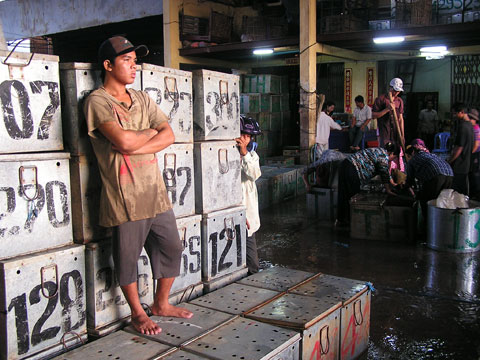
Watching the fish circus at Chbbar Ampouv
Unless you happen to work at Cambodia’s Ministry of Fish, it’s unlikely that you’ll ever hear about Chbar Ampouv. If you eat fish in Phnom Penh, you will have certainly eaten something that has changed hands there, most likely, trei ros.
The ubiquitous snakehead fish arrives at the Chbbar Ampouv landing point packed live in thin metal boxes, baskets, and tarpaulin-lined Toyota Camrys literally filled to the roof with flapping farmed fish. The modified Camrys drive straight into the unloading point; open the doors and a wave of fish slops out onto the concrete to be sorted into boxes of living and dead by the waiting attendants. A tango of weighing, tallying, repacking and on-selling ensues. The thousands of tons of snakehead that change hands at Chbbar Ampouv dock every year are redistributed by truck and motorcycle to Phnom Penh’s more consumer-oriented markets and a few cases make it across the street to the neighbouring bulk market.
Snakeheads are the perfect fish for Cambodia. They eat anything, grow quickly and can survive out of water for hours thus guaranteeing freshness in even the worst Cambodian transport and market conditions (Coincidentally, these are the same qualities that make them the scourge of fisheries elsewhere in the world). For eating, they’re a firm-fleshed fish. In Cambodian food, they tend to turn up in soups; fried whole with a sauce; or as dried fillets, both sweet and salty.
Location: The Chbbar Ampouv landing point is just south of the Monivong bridge in Phnom Penh, starts at dawn, and apart from the boxes of fish there is not much else to see. The opposite market (Psar Chbbar Ampouv) is one of Phnom Penh’s larger wet markets.
